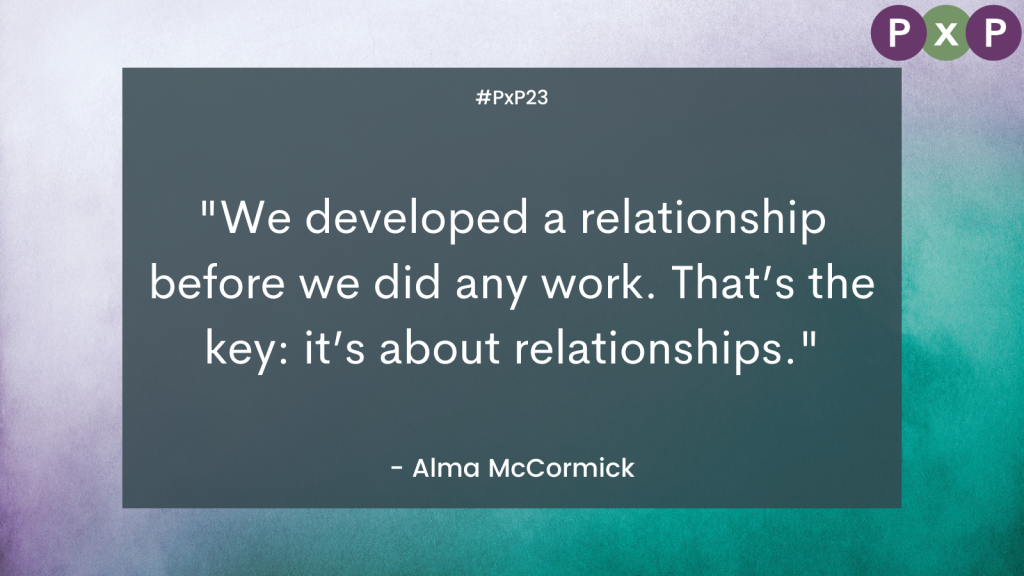By Joletta Belton
One of the things I really enjoyed during the course of the PxP: Partnering to Make Research Stronger conference was the lively Zoom chat discussions that took place during the presentations. To see these chats for yourself, they have been summarized and anonymized and are available on the PxP Resource Hub.
There were also great questions asked in the Q&A, yet there wasn’t always time for those questions to be answered in depth. I particularly liked this question: “what is one thing you would like see changed after PxP?”
The answer for me came quickly: Building more relationships. Specifically relationship-building between researchers and people in the community who live with whatever it is that’s being studied. Relationships that are inclusive, diverse, and equitable, where power is shared (or power differentials are at least acknowledged and transparent) and everyone is valued for the unique knowledge, perspectives, skills, and experiences they bring.
The need for building and sustaining relationships was a common theme throughout all three days of the conference. Some important questions surrounding this theme include: where does this relationship building start? Who should initiate it? How can relationship-building between researchers and communities/people with health conditions be facilitated, resourced, supported, and sustained? Who is doing this well? Where can we improve?
In the first session to kick off PxP: Partnering to Make Research Stronger (https://youtu.be/Lf2TJmFRW24?si=1bEK92puH5h_rHRq), Angela Ruddock made the distinction between public contributors and community engagement. No one person can ever represent an entire group, and groups themselves are heterogeneous. As Angela said, ‘there’s no such thing as a homogenous community anywhere’. So when it comes to relationship-building we need to move beyond thinking in terms of just partnering with one person with pain on a particular study, to engaging and involving communities of people who can better represent the inherent diversity of experiences, backgrounds, perspectives, and insights.
"Go to where the people are at, develop a relationship with them." Alma McCormick
This includes being sure to include all voices, as was discussed on day three (https://youtu.be/AC3zKsS37uU?si=CizLIO853V_VTjqv) and echoed what Angela said on day 1, that no group is ‘hard to reach’, they have been historically ignored and excluded. This exclusion can take the form of requiring patient partners and community members to come to the research, rather than the research going to the patient partners or into the community. Environments like the hospital, or health systems or academic systems and institutions, can actually be unsafe for some of these communities to come into, so there is a need for researchers to go into the communities to establish relationships and build trust.
Sandra Jayacodi asked, in the Including All Voices Session, ‘How about investing time and resources to building trust and relationship with communities?’ This sort of relationship building takes time, effort, and resources. We must avoid tokenism and embrace intersectionality and include and represent more diverse perspectives and peoples.
“Having funding that allows for pre-work and relationship building with communities. Funders for research have to proactively encourage and support inclusive research.” Sandra Jayacodi
It is so important that patient and public involvement and engagement in research is founded on strong, trusting relationships. This work needs be inclusive and representative, and certainly cannot be tokenistic. Relationship building takes investment of time, resources, and effort, but the payoffs are more than worth it.

